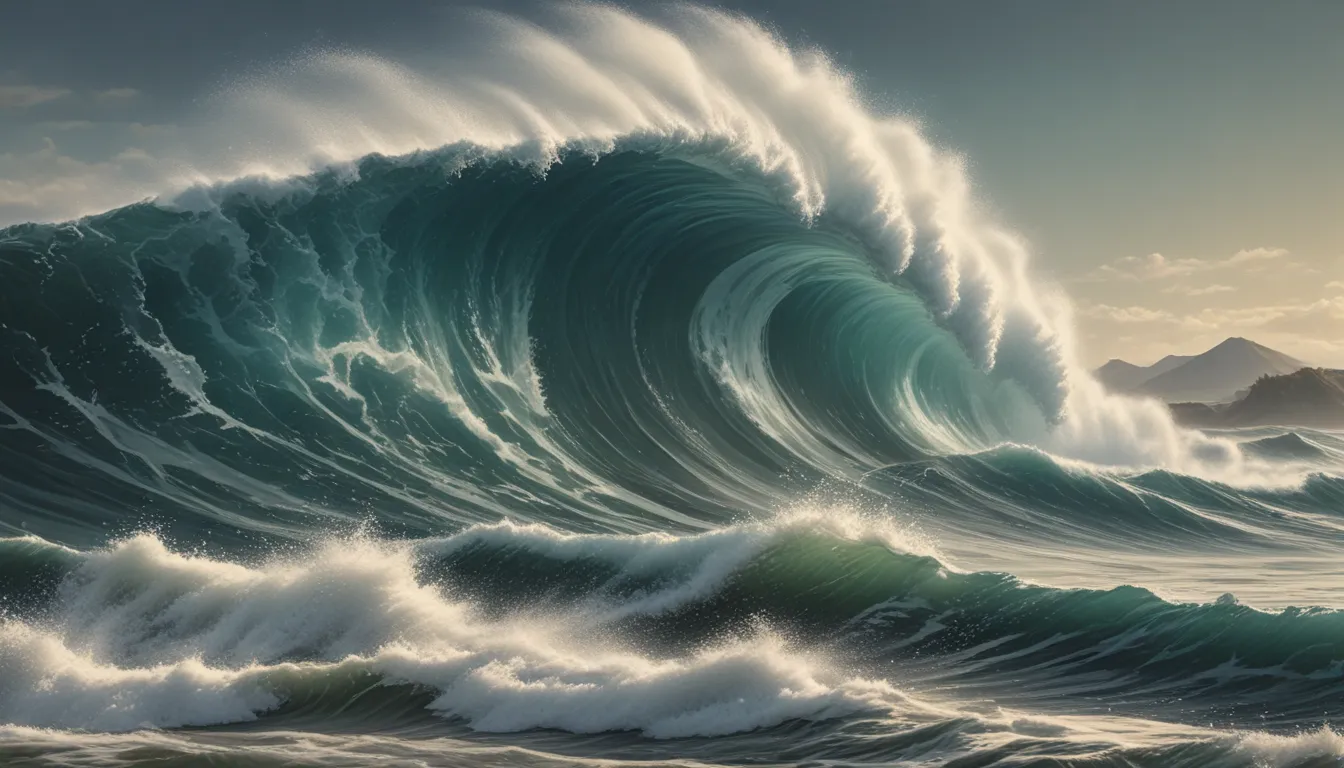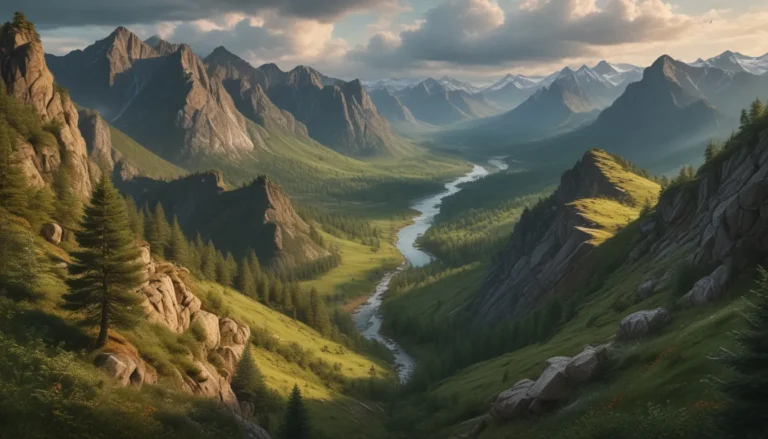A Note About Images: The images used in our articles are for illustration purposes only and may not exactly match the content. They are meant to engage readers, but the text should be relied upon for accurate information.
Welcome to our guide to understanding tsunamis – one of the most powerful and destructive natural forces on our planet. In this article, we will explore the fascinating world of tsunamis, from their causes and characteristics to historical events and safety measures. Join us on this educational journey as we delve into the depths of these awe-inspiring phenomena.
The Power of Tsunamis
Tsunamis are massive waves that occur when a significant volume of water is displaced, typically triggered by volcanic eruptions and earthquakes. These gigantic waves can strike coastlines with destructive force, sweeping away buildings, cars, and anything in their path. The energy and water contained in tsunamis pose a serious threat to life and property, causing drowning and traumatic injuries.
What Happens During a Tsunami?
The onset of a tsunami is often marked by a rumbling sound, followed by a towering wall of water that can flatten structures in an instant. Tsunamis do not come as a single wave but as a series of waves with strong currents. If caught in a tsunami, it is crucial to cling to something that floats, like a tree trunk or a post, to increase your chances of survival. In the aftermath of a tsunami, dangers such as contaminated water supplies and downed power lines persist, posing serious health risks.
Tsunami Facts to Know
Quick Facts
- The wavelength of a tsunami ranges from 10 to 500 kilometers.
- Tsunamis can travel at speeds exceeding 700 kilometers per hour.
- Earthquakes with a magnitude of 6.5 or higher are more likely to trigger a tsunami.
- The sea level can rise by up to 10 feet during a tsunami.
- Tsunamis occur approximately twice a year.
Essential Facts
- Tsunamis are also known as seismic sea waves.
- They are caused by earthquakes, volcanic eruptions, or underwater landslides.
- Tsunamis consist of a series of waves, not a single wave.
- They are extremely destructive natural disasters.
- Tsunamis are distinct from tidal waves, which are caused by gravitational forces.
Interesting Facts
- The term “tsunami” originates from the Japanese words for “harbor wave.”
- The first wave of a tsunami is often not the most powerful.
- Some animals may possess the ability to sense tsunamis before they strike.
- The approach of a tsunami is often accompanied by a loud roaring sound.
- Tsunamis can symbolize insecurity, vulnerability, and independence in dreams.
Notable Tsunami Events
The 2004 Indian Tsunami
One of the deadliest tsunamis in history occurred on December 26, 2004, following a massive undersea earthquake near Sumatra. The tsunami devastated coastal regions across the Indian Ocean, resulting in over 225,000 fatalities. Countries such as Indonesia, Sri Lanka, India, Maldives, and Thailand were severely impacted by this catastrophic event.
The 2011 Tohoku Tsunami
On March 11, 2011, Japan experienced a devastating earthquake and tsunami that caused widespread destruction and claimed thousands of lives. The tsunami generated waves as high as 132 feet, leading to extensive damage to infrastructure and triggering a nuclear disaster at the Fukushima Daiichi Power Plant.
Mitigating the Impact of Tsunamis
Understanding the risks associated with tsunamis is essential for preparedness and safety. By staying informed, following evacuation protocols, and seeking higher ground during a tsunami warning, individuals can minimize the impact of these destructive waves. Early warning systems, such as tsunami buoys and warning centers, play a crucial role in alerting communities to potential tsunami threats and saving lives.
Conclusion
Tsunamis are natural phenomena that carry immense power and pose significant risks to coastal communities. By learning about the causes, characteristics, and historical events of tsunamis, individuals can better prepare themselves and protect their communities from the devastation wrought by these formidable waves. Remember, knowledge is power when it comes to understanding and mitigating the impact of tsunamis. Stay informed, stay safe, and be prepared for whatever nature may bring your way.
We hope this guide has provided you with valuable insights into the world of tsunamis and empowered you to take proactive steps towards tsunami preparedness. Thank you for joining us on this educational journey through the awe-inspiring realm of natural disasters. Stay safe, stay informed, and stay resilient in the face of nature’s forces.






